

What to do if you become ill while traveling…



Getting sick in a foreign country can be challenging, but there are steps you can take to manage the situation effectively. Obviously, if you have a life-threatening situation, your first concern is getting to the closest medical center, wherever you may be. If you anticipate medical issues based on your current health, here are some suggestions as to what you may do:
We are grateful for having the appropriate health insurance and for receiving good care to help me through the crisis. Although I feel weak since leaving the hospital, I am much better, and my blood pressure is normal. I will be very grateful if I avoid another such event until we get to Cleveland Clinic.
Be well.
Photo from ten years ago today, July 29, 2014:

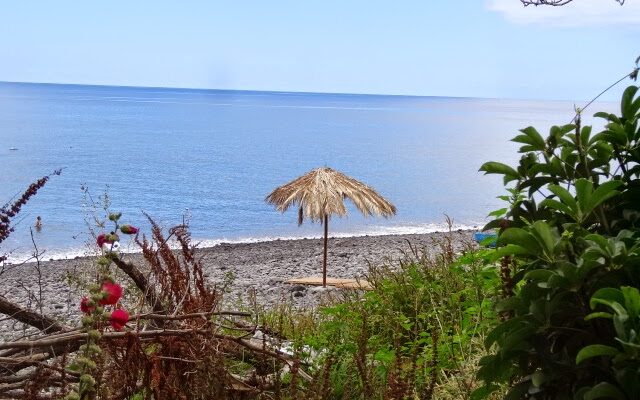

It all started on Thursday morning. I went for a short walk, and we headed to the bank’s ATM for some cash and then to Aldi. I had only been to one Aldi in the UK, but I was curious about what a US store was about. Upon entering the store, within a few minutes, I saw it wasn’t for me.
I had no idea about the “off-brand” products and wouldn’t have time to use them to determine their quality. Plus, it mainly was packaged, processed foods that we don’t eat. After grabbing the four spices we needed, I headed to check out. It was at this time that I began to feel light-headed and shaky,
From there, we drove to the Cub Market to pick up our awaiting grocery order, which I had placed earlier in the day. Once we returned to the hotel, Tom carried in the groceries I put away. I still felt light-headed, shaky, and dizzy. I sat down, hoping the awful feeling would pass. But ten minutes later, I felt worse.
Thinking that it might be a breakthrough Afib and possibly an increase in blood pressure, I took my blood pressure. Normal blood pressure is roughly 120/80. Mine was 240/142, outrageously and dangerously high. I took the reading three times, and it didn’t budge. I told Tom we needed to call 911.
Within minutes, help arrived with police and firefighters, and shortly after that, paramedics with the ambulance. The 20-minute ride in the ambulance was bumpy and unsettling. Still, before I knew it, we arrived at Methodist Hospital, and I was rushed into a room in the emergency department where I was hooked up to lots of equipment and given nitroglycerin, and blood tests were done.
Heart and valve problems definitely impact blood pressure. Blood tests were taken, and it was determined that I hadn’t had a heart attack but had what is called malignant blood pressure, described as follows from the Cleveland Clinic:
Malignant hypertension occurs when a sudden spike in blood pressure puts you at risk for organ damage. It often happens in people with a history of high blood pressure. But it can also occur in people with normal blood pressure. The condition is a medical emergency that requires immediate care.”
We both felt I was in good hands. Once I was stabilized, the doctor suggested I stay overnight for some tests. I explained that I had scheduled appointments at the Cleveland Clinic beginning on August 28 after leaving Minnesota on August 25. I explained that my objective was to determine if it was safe for me to wait for treatment for the upcoming appointments in Cleveland and that nothing was going on that required we leave sooner.
By 10:00 pm, after six hours in the emergency department, I was escorted to a spacious private room on the cardiac floor. During the night, I had scans and didn’t get much sleep.
After the tests during the night and more the next day, it was determined I was safe to wait for the month until we’d get to Cleveland. Still, if I had another episode of malignant hypertension, I’d need to return to the hospital for treatment.
Two days later, I was released with no new drugs or prescription changes, and yesterday afternoon, we returned to the hotel by 2:00 pm. I certainly didn’t feel like going out to dinner, but instead, based on the items we purchased from Cub, I could slice the vegetables for us to put together our desired bread-less subway-type sandwiches.
It was so good to be back at the hotel, albeit slightly tentative, feeling weak and exhausted after lying in bed for two days and nights. But I am attempting to walk a little every 30 minutes.
Thanks to our readers who wrote about our well-being. We appreciate all of you!
Be well.
Photos from ten years ago today, June 28, 2014:


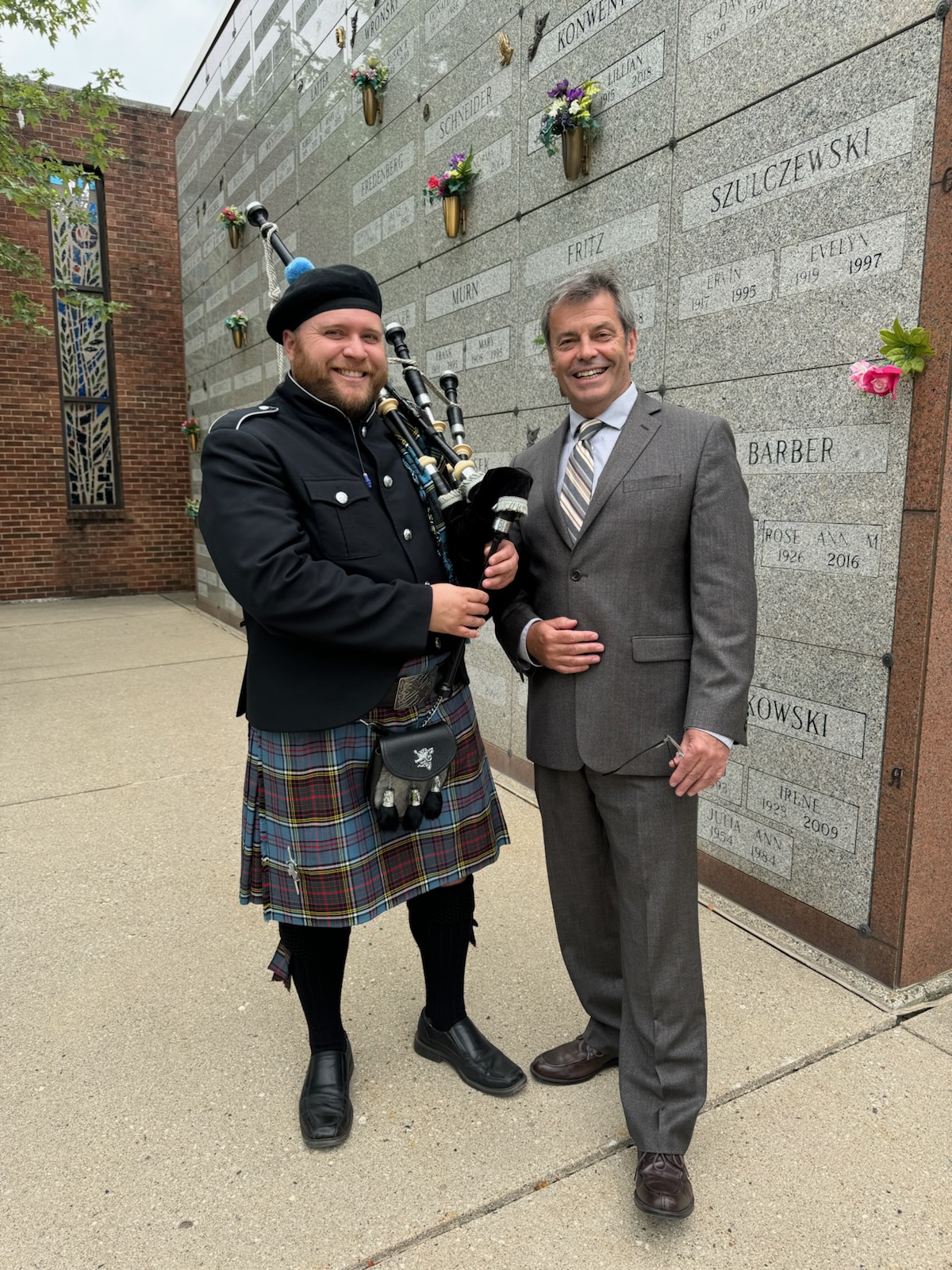
We are so glad we stayed behind for Tom’s sister Patty to see Sister Beth’s memorial service. It meant the world to her. Mary’s (who was in Milwaukee at the service) husband, Eugene, joined us at Patty’s home, and the four of us watched the hour-long service intently. It was beautifully done with compassion and attention to detail. It was evident Sister Beth was dearly loved.
We brought my laptop with Tom’s as a backup, our HDMI cord, and our portable speaker. I set my phone up as a hotspot, which worked quite well when Patty doesn’t have WiFi in her home. There were a few delays on the other end, but finally, they got the video stream working properly, and we could easily watch.

After the service, the luncheon was served in Milwaukee (see the menu below), and then over 30 mourners, including Tom’s 13 family members and many nuns, headed to the cemetery for the burial. As shown in the main photo, Tom’s nephew Tony, son of Margie, had arranged for a bagpipe player to perform at the burial service, as shown in the main photo.
For the four of us observing the service by video, we decided on our own lunch to celebrate Sister Beth and headed to one of Patty’s favorite restaurants. We talked about Sister Beth, sharing personal experiences and being grateful in our own way that we could participate from afar.
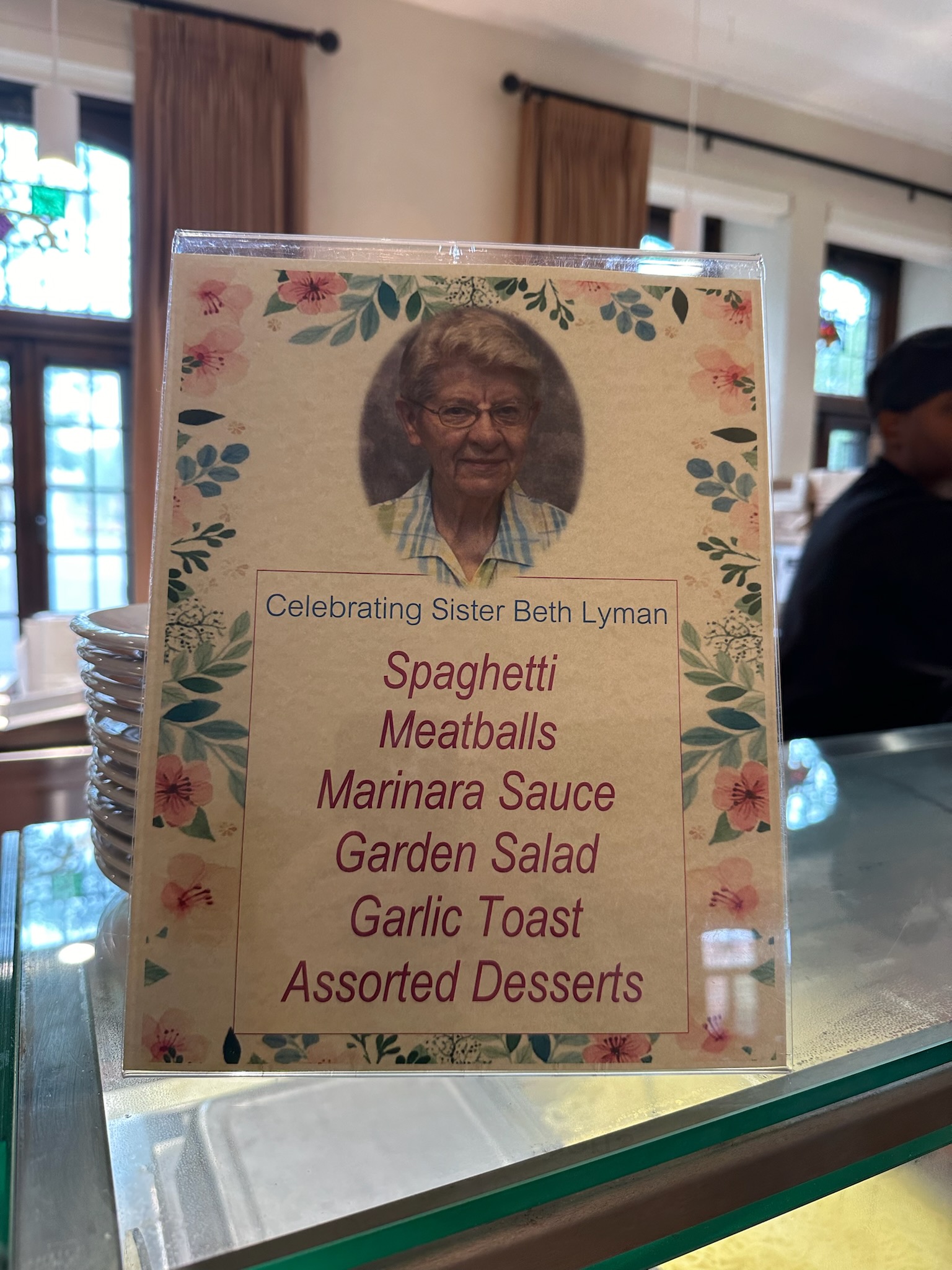
We had a lovely lunch, and by early afternoon, we were back on the road to our hotel. We quietly spent the remainder of the day there until we had a light dinner around 6:30. Later, we settled in to watch our favorite new series, For All Mankind, on Apple TV. If you like stories about “space,” this is a much-watched drama.
Technology, such as what we used, made this possible. This relatively simple process was very familiar to us since we’ve been utilizing streaming for many years. However, we certainly understand how difficult this could be for those who don’t have WiFi in their homes and have never streamed any movies, series, or events.
Soon, we’ll head out to the bank and Aldi market for a few items and then pick up our usual grocery order from Cub Foods. When I placed the order this morning, they were out of several products we use, resulting in the necessity of stopping at another market.
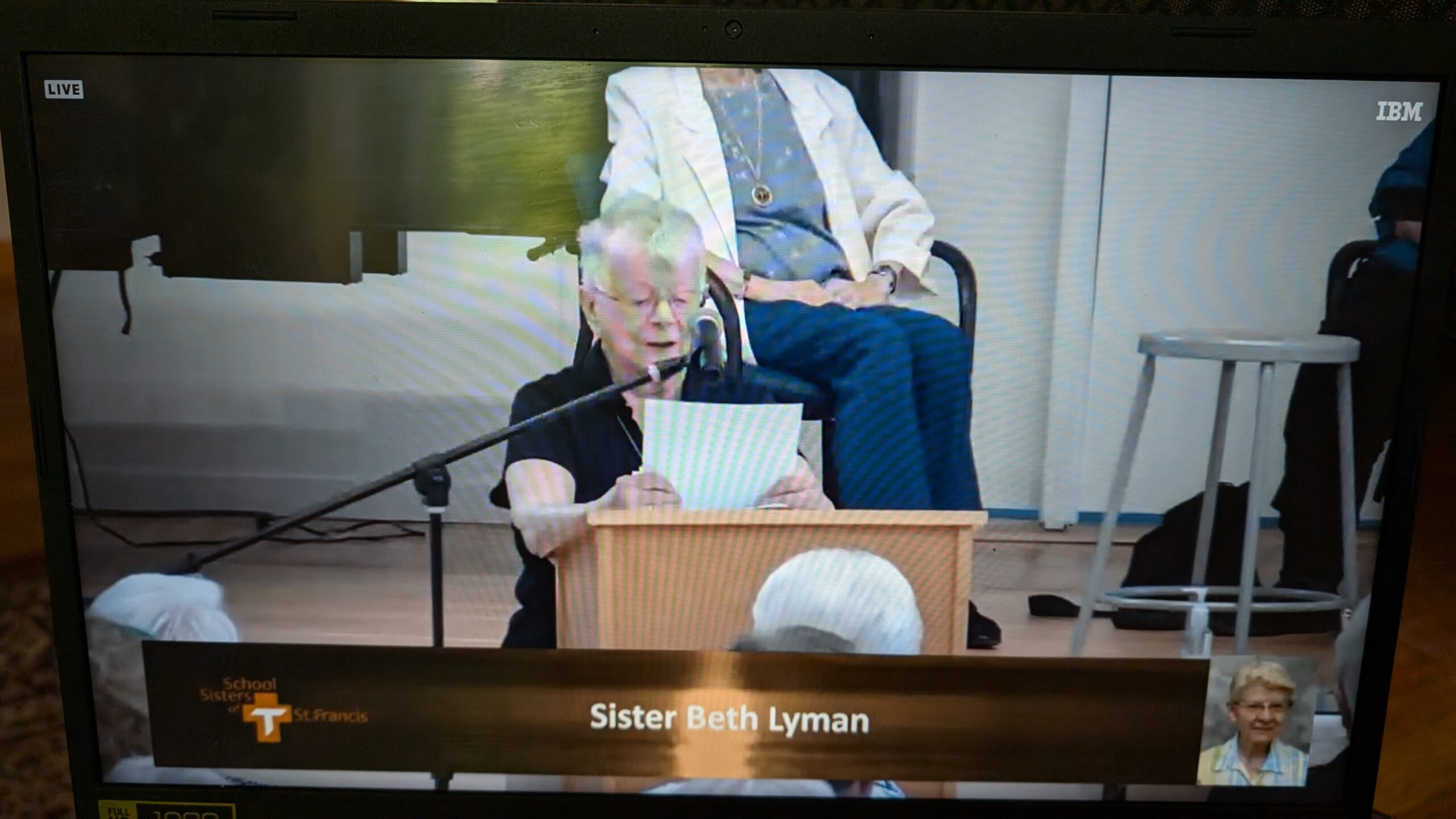
Yesterday, it dawned on us that we’ll leave for Cleveland Clinic one month from today. The months-long wait has happened quickly with all the beautiful times we’ve spent with family and friends. We’ll cram in as much as possible in these remaining 30 days before heading out on the two-day road trip.
That’s all for today, folks. Thank you for the loving and thoughtful condolences for Tom and his family. The kindness of our readers worldwide never ceases to amaze us. Thank you for being YOU!
Be well.
Photo from ten years ago today, July 25, 2014:

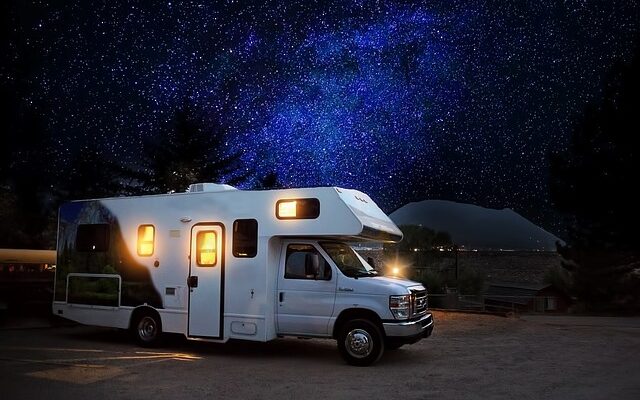
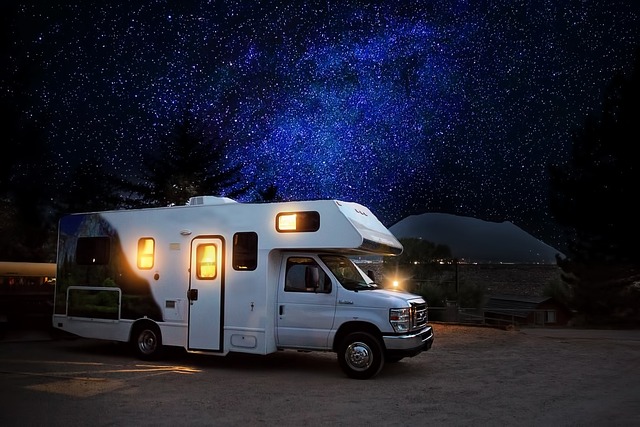
We are often asked, “Why don’t you travel to the US or other countries by motorhome?” We haven’t in the past almost 12 years because we’ve spent most of our time outside the US, making owning or renting an RV impractical in another country for an extended period.
We are also not interested in renting an RV for short periods when we can easily travel outside the US using other means of travel, which provides us with a broader range of locations, safety, and cost options. Most certainly, traveling in the US in an RV is appealing, but neither of us, at our age, has any interest in the responsibility, cost, and upkeep.
In 1978, after subdividing some land in Minnetonka, Minnesota, I traded one of the vacant lots for a 36-foot King’s Highway Motorhome. As a single mom of two boys, I learned to drive and maintain it, and we often traveled the US, often with friends joining us, when I had time to take vacations while running my business.
Eventually, after realizing we wouldn’t use it as often as I would have liked, I rented it, off and on for a year, eventually selling it for a reasonable price. The experience left me with a dislike for traveling by RV based on the work required to set it up and take it down at various RV sites, with what seemed to be constant maintenance along with the cost of fuel.
Early on, before we decided to travel the world, we investigated purchasing a motorhome but lost interest when we both realized the cost would be prohibitive in today’s world since we aren’t campers and would have preferred modern conveniences over “roughing it.”
Over the years, we have met many travelers and friends who have reveled in home-free travel, living full-time in a motorhome. We commend those who made this big decision, but it wasn’t for us.
Today, we share our perspective of traveling by motorhome, RV, or camper, offering this unique experience with its own advantages and disadvantages. Here’s a breakdown:
In summary, motorhome travel can be an enriching and flexible way to explore, but it comes with cost considerations, driving difficulty, and maintenance, none of which are appealing to our lifestyle.
Be well.
Photo from ten years ago today, July 23, 2014:

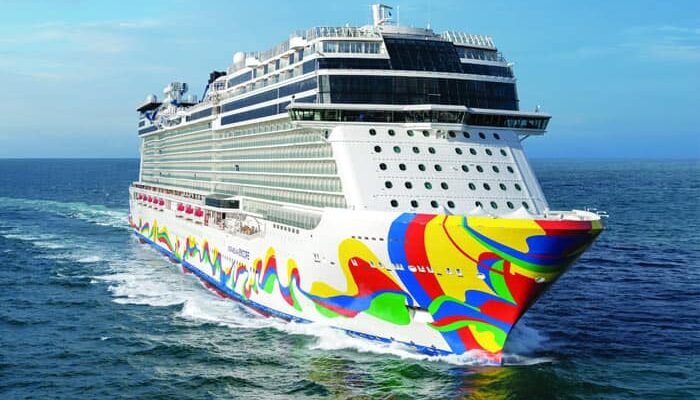
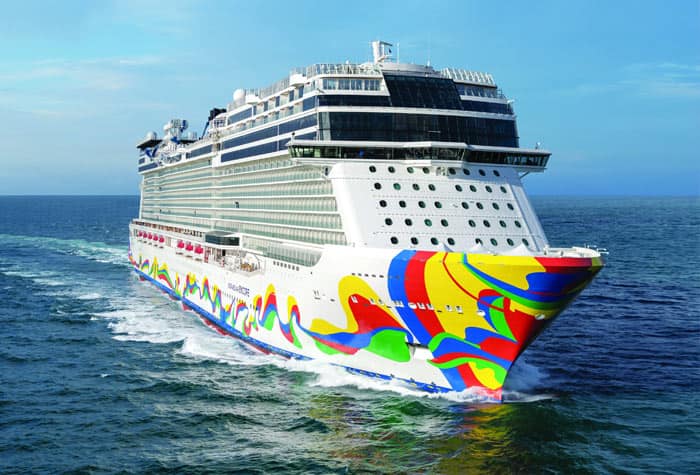
This morning, I stumbled across an article on this site that piqued my interest. After 34 cruises and many tours at ports of call, we were always well aware of how imperative it is to return to the ship on time before it sails away, heading to its next port of call. If we failed to return on time, it would be necessary to fly to the next port of call to pick up the cruise, incurring costs for hotels, meals, and flights, often expensive from somewhat remote locations.
We paid particular attention to the time, making a point of returning to the ship in plenty of time to avoid the hassle, cost, and inconvenience. When encountering the article below, we felt it was important to share this story with our readers to remind everyone of the importance of getting back to their ship on time:
The family was left with a $9,000 bill after the holiday mistake…
A family of nine found themselves stranded in Alaska after a mix-up with a local tour operator caused them to miss their scheduled cruise departure.
What was intended to be a memorable trip of a lifetime might now be recalled for very different reasons. The Gault family faced hefty costs to return to Tulsa, Oklahoma when the ship containing their clothes, passports, and medication sailed from Ketchikan port without them.
The family, comprising of two parents, six children, and a 78-year-old grandmother, was also hit with an immediate fine of almost $9,000, working out at $971 per passenger, by Norwegian Cruise Lines for missing the vessel.
That fee stemmed from the US Customs and Border Protection’s Passenger Vessel Services Act, which they violated by not visiting a foreign port before they returned to the US.
The family’s nightmare started when they went on an excursion to see a lumberjack show on the Norwegian Encore ship they were traveling, which docked in Ketchikan in Alaska.
After watching the show, the group tried to catch a bus back to the port by a local tour operator but were told that the bus was full and they had to wait for another one.
“We go to get on the bus and one of the attendees is like, ‘The bus is full and you know, you got to wait for the next bus’,” Joshua recounted to KJRH.
However, that bus never came, and after frantically calling the port authority to arrange transportation, they finally arrived back at the docks to see Norwegian Encore sailing away — taking their passports, medication, and clothes with it.
“We all had to quit cold turkey medication these last few days because it was all on the cruise ship,” Joshua added.
Stranded in Ketchikan, a remote port 300 miles from Alaska’s capital of Juneau, with no accommodation or transportation, the family worked out how to arrange transportation back to their home in Tulsa. However, as they looked into booking flights, they found that Joshua’s credit card had already been charged the customs fee of almost $9,000.
Joshua claims that they had to pay for flights for nine people, hotel stays along the way, and food. The trip ultimately took them several days, during which they had canceled flights and overnight airport stays, during which time some family members caught COVID-19.
After returning to Oklahoma, Joshua added: “So yeah, we’re beat down right now. We’re unhealthy and beaten down.”
Cruise line officials said they would reimburse the family for the out-of-pocket expenses, the fee they incurred from US Customs and Border Patrol, and a pro-rated refund for the two missed cruise days.
A spokesperson for Norwegian Cruise Lines said: “On the afternoon of Friday, 12 July, a family of nine guests missed the ship’s all-aboard time in Ketchikan, Alaska, due to a misstep by a local tour operator. When the guests did not return to the ship at the published time, we attempted to contact them but could not reach them. As such, we alerted the local port agent in Ketchikan and requested that they assist the family with booking a hotel for the night.
“As the guests would be unable to downline in the next port of call, Victoria, British Columbia, the port agent also helped the guests secure flights to Seattle the following day, 13 July.
“We will be reimbursing the family for all of the out-of-pocket expenses they incurred over these two days due to missing the ship in Ketchikan, including meals, accommodations, etc. Reimbursements will be processed once receipts for these expenses are provided to us. Additionally, we have already initiated the process to refund the family for the fee imposed by the US Customs and Border Patrol as a result of the guests not visiting a foreign port before returning to the US, as required when an itinerary originates from the US in accordance with the Passenger Vessel Services Act.
“These guests will also receive a prorated refund for the two missed cruise days. As a gesture of goodwill, the company will also be providing each of the nine guests with a future cruise credit in the form of a 20 percent discount on their cruise fare that can be used towards their next voyage.”
Although the cruise line partially reimbursed the family for this situation, it is a harsh reminder of how important it is to avoid missing a cruise ship’s departure at any port of call.
Note: Most cruise ships will wait for passengers who don’t return on time if they’ve booked a ship-arranged tour. Often, cruise passengers book their own tours based on the lower costs of such tours, as opposed to those arranged by the cruise line. It was unusual for the cruise line to reimburse/credit the passengers for the expenses in this type of scenario.
Be well.
Photo from ten years ago today, July 22, 2014:

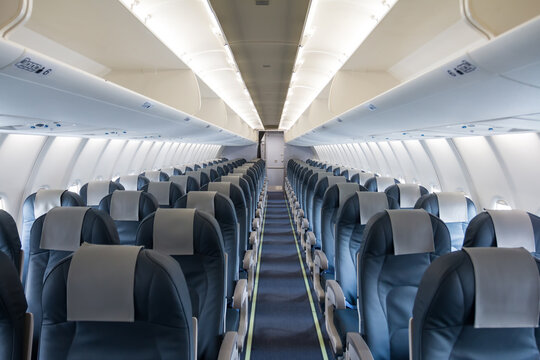
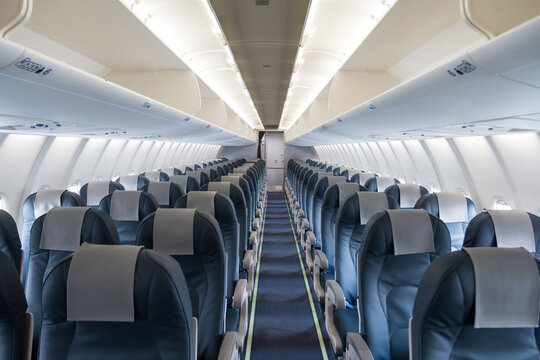
There have been several occasions over our last almost 12 years of travel, a few occasions by sheer luck at the airport and other times when we researched using the following techniques. Realizing it was more of a stroke of luck than due to our diligence, we started exploring ways to become more successful, but in some of the following, you’ll see it takes a concerted effort to accomplish such a goal.
Flying business class offers a range of perks and comforts that economy class can’t match, including more spacious seating, superior service, and enhanced dining options. However, the cost can be prohibitively high. Fortunately, there are several strategies to secure business-class seats at a fraction of the standard price. Here are some tried-and-true methods to help you fly in style without breaking the bank.
One of the most effective ways to get cheap business-class seats is by using frequent flyer miles and credit card points. Many airlines have loyalty programs that allow you to accumulate miles through flights and everyday spending on affiliated credit cards. Here’s how to make the most of your miles:
Airlines often have sales and promotions that can significantly reduce the cost of business-class tickets. Stay informed about these opportunities:
Several websites are dedicated to finding the best flight deals, including business-class discounts. These websites can save you a lot of time and money:
Flexibility is key when it comes to finding cheap business-class seats. If you can be flexible with your travel dates, you have a better chance of finding lower prices:
Many airlines have introduced bidding systems for upgrades, allowing passengers to bid for a business-class seat. Here’s how it works:
Airlines often offer companion deals, where you can buy one business class ticket and get the second one at a significant discount or even free:
If you travel for work, check if your company has a corporate travel agreement with airlines. These agreements can offer substantial discounts on business class tickets:
Sometimes flying indirectly can save you money on business class tickets:
Airfare consolidators buy tickets in bulk from airlines and sell them at a discount. While this method requires some research, it can yield significant savings:
Airlines frequently offer exclusive deals to their newsletter subscribers and loyalty program members. Signing up can give you early access to sales and promotions:
By using a combination of these strategies, you can significantly reduce the cost of business-class travel. Whether you accumulate miles, stay flexible with your travel dates, or take advantage of sales and promotions, cheap business-class seats are within reach. Happy travels!
We aren’t planning any flights now, but when we do, we will reread this post to remind us to use as many of the above techniques as possible to find the best possible prices on business-class flights. We hope you’ll consider doing the same.
Be well.
Photo from ten years ago today, July 21, 2014:



At 11:30, we’re driving to St. Paul to attend an event hosted by the law firm representing railroad workers whose health was impacted by exposure to asbestos and other chemicals while working for the railroad. Tom has completed all the paperwork to participate as a claimant, which has already been settled. Over the next few years, he will receive small sums periodically to compensate for his diagnosis of pulmonary fibrosis, a direct result of the exposure over 42½ years.
Pulmonary fibrosis is a serious, often debilitating condition characterized by the scarring of lung tissue, leading to a progressive and irreversible decline in lung function. Among the various etiologies of pulmonary fibrosis, asbestos exposure remains a significant concern, particularly for individuals working in industries with high risk of exposure, such as the railroad industry. This essay explores the relationship between asbestos exposure and pulmonary fibrosis, focusing on its impact on railroad employees.
Pulmonary fibrosis involves the thickening and stiffening of lung tissue due to scar tissue formation (fibrosis). This scarring impairs the lungs’ ability to transfer oxygen into the bloodstream, leading to chronic dry cough, shortness of breath, fatigue, and chest discomfort. As the condition progresses, it can result in severe respiratory failure and other complications. The disease can be idiopathic, but occupational exposure to harmful substances like asbestos is a well-recognized cause.
Asbestos is a group of naturally occurring fibrous minerals known for their durability, heat resistance, and insulating properties. These qualities made asbestos popular in various industries, including construction, shipbuilding, and railroads, particularly during the mid-20th century. However, when inhaled, asbestos fibers can become lodged in the lungs, leading to chronic inflammation, cellular damage, and eventually fibrosis. The latency period between exposure and disease onset can be several decades, complicating early detection and intervention.
Railroad employees, especially those in maintenance, repair, and operations, historically faced significant asbestos exposure. Asbestos was commonly used in locomotive brakes, clutches, insulation for boilers and pipes, and even in the construction of railcars. Workers involved in the maintenance and repair of these components were at high risk of inhaling asbestos fibers. The confined spaces these workers often operated exacerbated the risk, as disturbed asbestos materials could easily become airborne and inhaled.
When asbestos fibers are inhaled, they can penetrate deep into the lung tissues and become trapped. The body’s immune response to these fibers involves the activation of alveolar macrophages, which attempt to engulf and digest the fibers. However, the durability and size of asbestos fibers often prevent their complete breakdown, leading to a persistent inflammatory response. Over time, this chronic inflammation results in fibroblast activation and the deposition of extracellular matrix components, culminating in the development of fibrotic tissue.
Symptoms of asbestos-induced pulmonary fibrosis, also known as asbestosis, typically include progressive dyspnea, a persistent dry cough, chest pain, and digital clubbing. Diagnosis often involves a combination of a detailed occupational history, imaging studies (such as chest X-rays and high-resolution computed tomography scans), pulmonary function tests, and sometimes lung biopsy. Imaging studies in asbestosis typically reveal diffuse interstitial fibrosis, often with a characteristic lower-lobe predominance and pleural plaques. Over the years, many of Tom’s co-workers have passed away from lung diseases, most of which were caused by asbestos and other chemical exposures.
The recognition of the health hazards associated with asbestos led to significant regulatory changes aimed at protecting workers. In the United States, the Occupational Safety and Health Administration (OSHA) has set stringent standards for asbestos exposure, including permissible exposure limits, mandatory protective equipment, and regular monitoring of air quality in workplaces. Despite these regulations, cases of asbestos-related diseases continue to emerge, primarily due to the long latency period and past exposures.
Railroad employees diagnosed with asbestos-induced pulmonary fibrosis often face substantial medical expenses and loss of income due to their inability to work. Legal avenues for compensation are available, with many workers pursuing claims under the Federal Employers Liability Act (FELA). Successful claims typically require proving that the employer’s negligence contributed to the worker’s exposure to asbestos and subsequent illness. Additionally, asbestos trust funds, established by bankrupt asbestos manufacturers, provide another source of compensation for affected workers.
Pulmonary fibrosis resulting from asbestos exposure remains a critical occupational health issue, particularly for railroad employees with historical exposure. The insidious nature of asbestos-related diseases, characterized by a prolonged latency period, underscores the importance of ongoing surveillance and early intervention for at-risk populations. While regulatory measures have reduced current exposure risks, the legacy of past asbestos use continues to impact the health of many railroad workers. Ensuring access to medical care, supporting legal compensation claims, and advancing research into effective treatments for pulmonary fibrosis are essential steps in addressing this ongoing public health challenge.
Today, at this event, Tom will see some of his co-workers diagnosed with this condition and dealing with the consequences.
Be well.
Photo from ten years ago today, July 20, 2014:


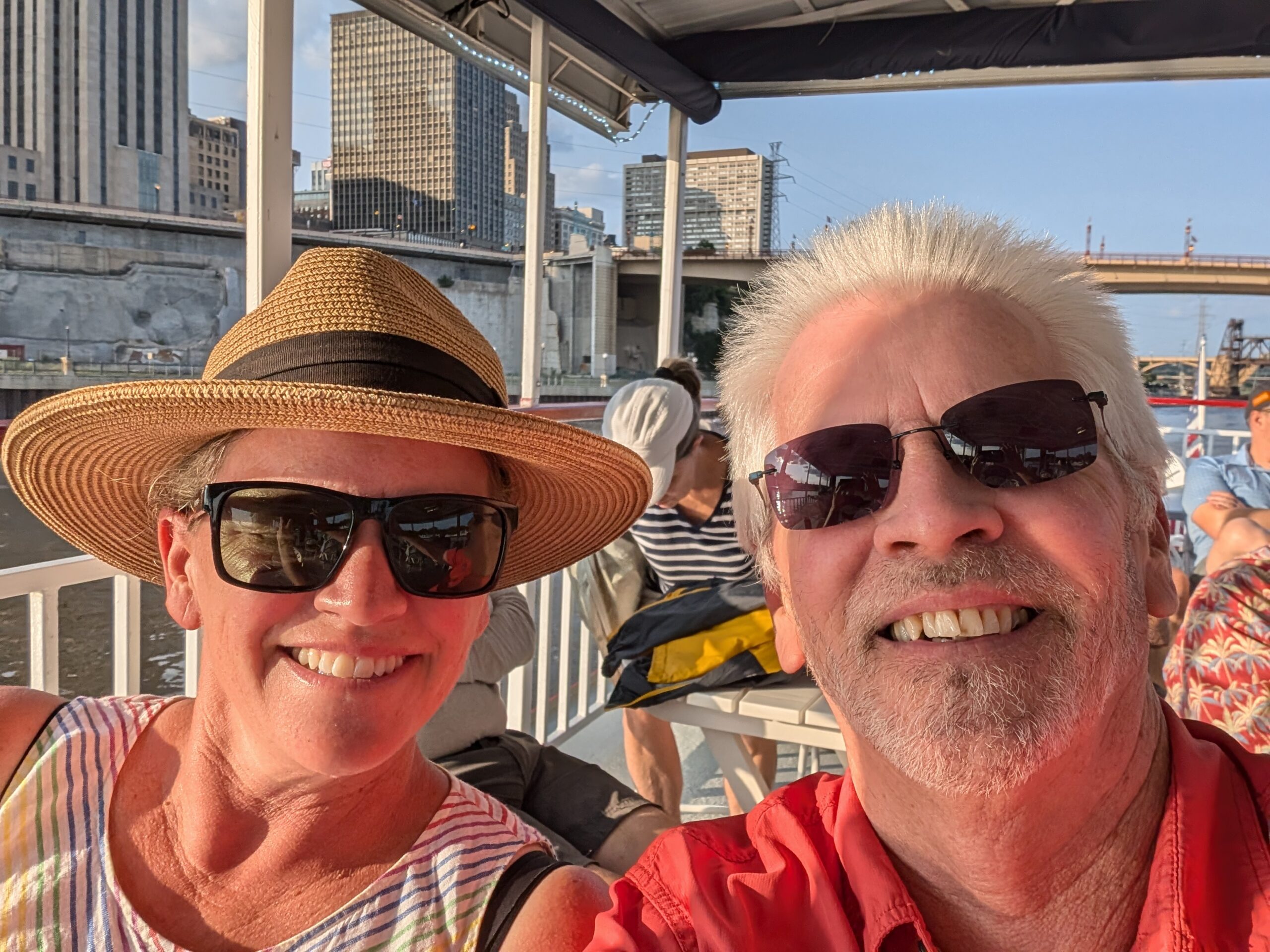
Yesterday, Tom and Tammy embarked on the Mississippi Park Connection’s History Cruise. It was just the two of them and a good time for father and daughter to be together without distraction. I had a similar experience on a Mississippi River cruise with Greg and his family a few years ago.

From this site, information about the History Cruise for our many readers in Minnesota:
“Boarding begins at 5:30 pm; the boat leaves promptly at 6. Enjoy a riverboat cruise on the spectacular Mississippi River and participate in a program led by the National Park Service and a special guest speaker. More details are coming soon. In addition to gaining more knowledge from our guest speakers, participants will enjoy wildlife, scenic sunset views, and a cash bar.
Price:
$30 for members
$35 for non-members.
Learn more about becoming a member at parkconnection.org/membership. Are you a member and forgot your exclusive member promo code discount? Email info@parkconnection.org
Directions and Parking:
Watergate Marina
2500 Crosby Farm Road
St. Paul, MN 55116
Free parking will be available in the marina parking lot. Seating is limited. Registration is required.
History Cruise Dates
July 18
Aug 15
September 5″
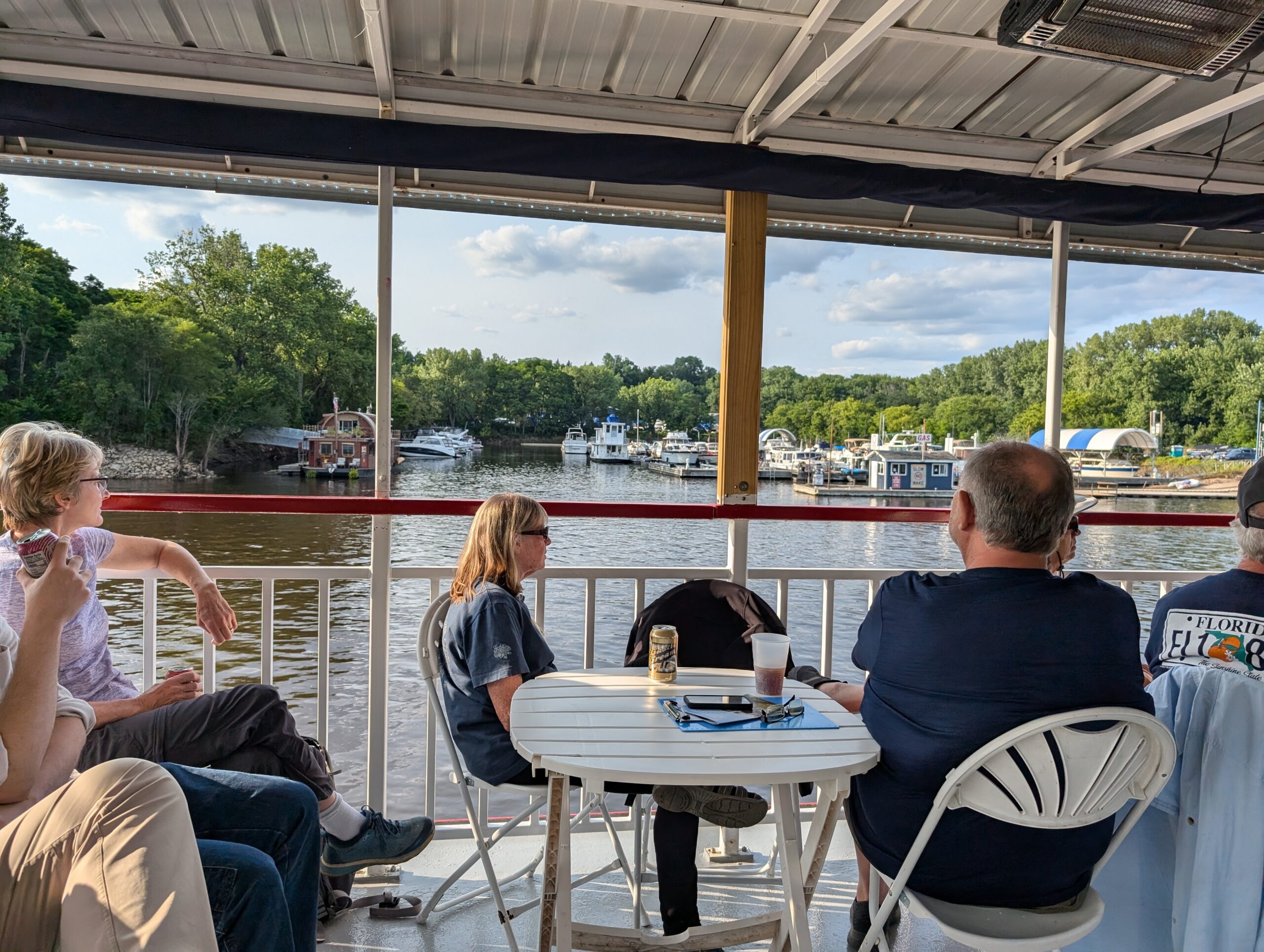
Embarking on a history cruise along Minnesota’s rivers offers a unique and immersive experience that delves into the state’s rich and diverse past. As the vessel glides along the waterways, passengers are transported back in time, discovering stories of indigenous cultures, early settlers, and significant events that have shaped Minnesota’s identity.
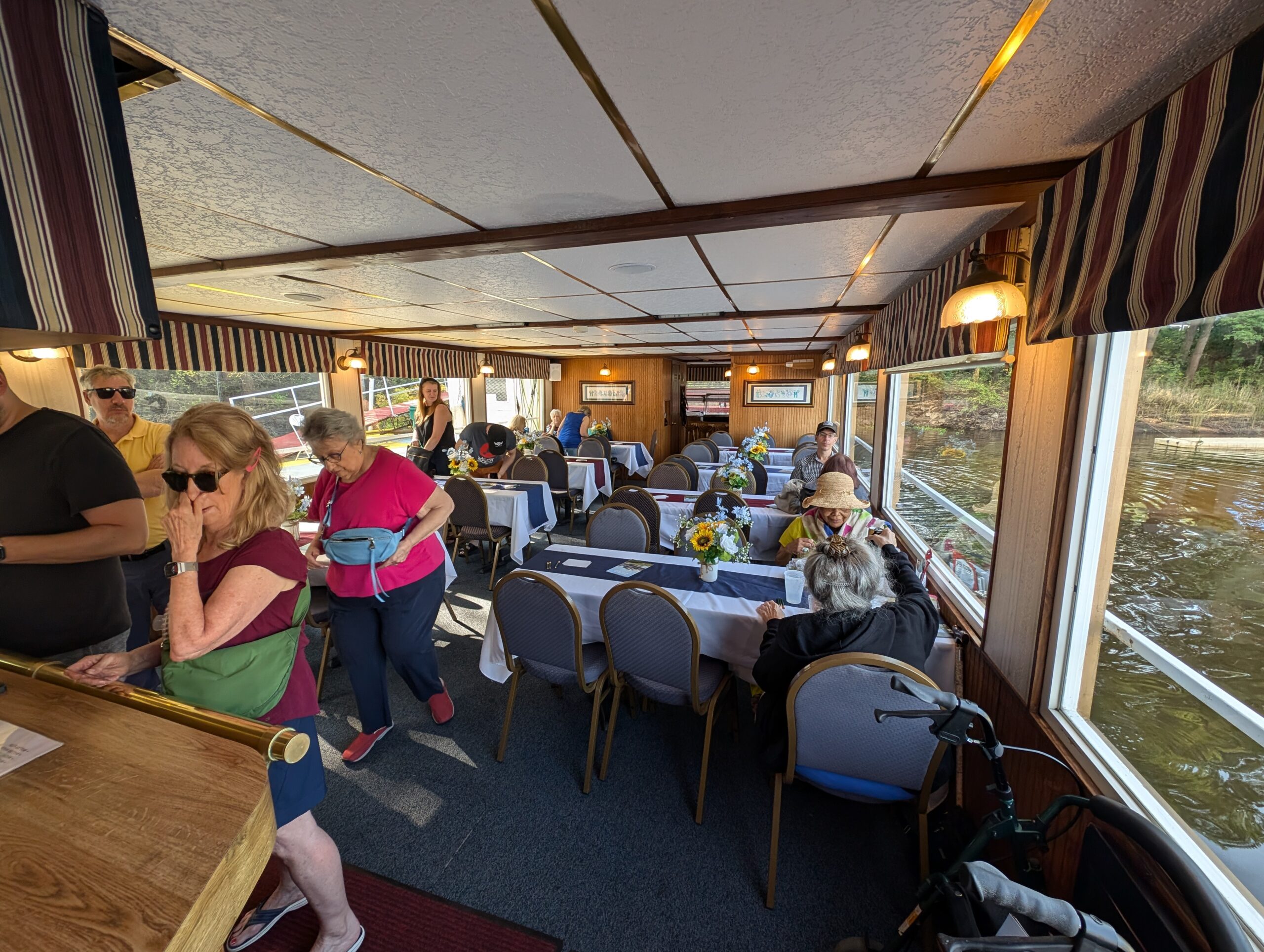
Long before European settlers arrived, Minnesota was home to various indigenous tribes, including the Dakota and Ojibwe peoples. These tribes thrived along the Mississippi and Minnesota Rivers, relying on abundant natural resources for sustenance and trade. A history cruise often begins by highlighting these native cultures, showcasing their deep connection to the land and water. Passengers can learn about traditional practices, such as wild rice harvesting and birchbark canoe making, which remain integral to indigenous life.
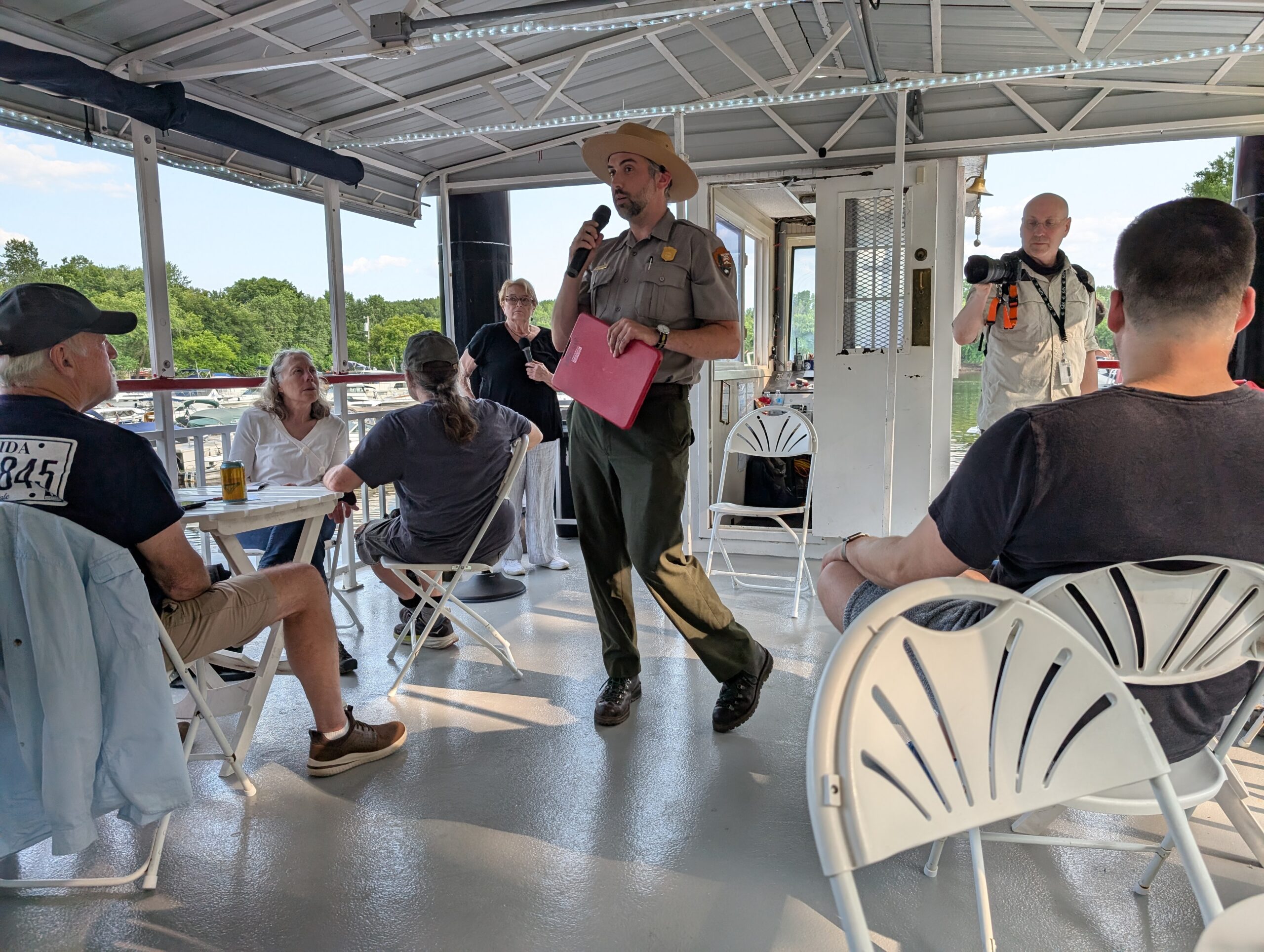
The 17th century marked the arrival of European explorers and fur traders, profoundly impacting the region’s history. French explorers like Daniel Greysolon and Sieur du Lhut navigated these waterways, establishing trade relationships with Indigenous tribes. The fur trade era, dominated by companies like the North West Company and the Hudson’s Bay Company, transformed the rivers into bustling trade routes. Onboard historians often recount tales of adventure, competition, and cultural exchange during this pivotal period.

As the 19th century progressed, the rivers became vital corridors for settlers moving westward. Steamboats were crucial in transporting people and goods, fostering the growth of riverfront towns like St. Paul and Minneapolis. These cities eventually became economic and cultural hubs, driving Minnesota toward statehood in 1858. A history cruise offers insights into the challenges and triumphs faced by early settlers, from navigating the treacherous river currents to establishing thriving communities.
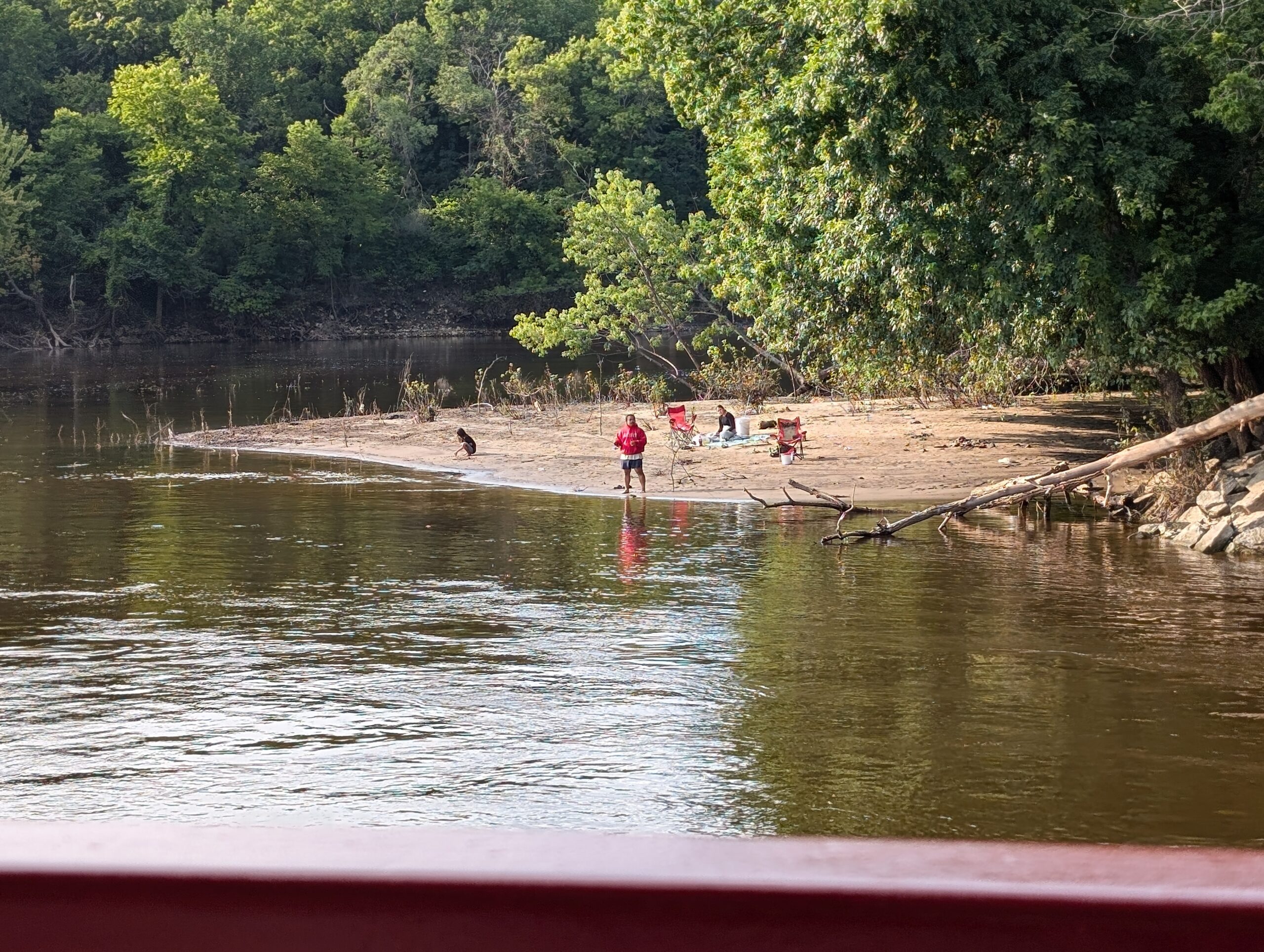
The late 19th and early 20th centuries witnessed significant industrial growth in Minnesota, much centered around the rivers. Lumber mills, flour mills, and iron ore shipments all relied on the waterways for transportation. Minneapolis, known as the “Mill City,” became the world’s leading flour producer, thanks to the power generated by St. Anthony Falls. Cruisers can explore the remnants of these industrial giants, learning how innovation and industry propelled Minnesota into the modern age.

In recent decades, Minnesota has strongly emphasized environmental preservation and sustainability. Efforts to clean and protect the rivers have been paramount, ensuring these waterways remain vibrant ecosystems. Passengers on a history cruise can witness these conservation efforts firsthand and understand the balance between development and preservation that defines modern Minnesota.
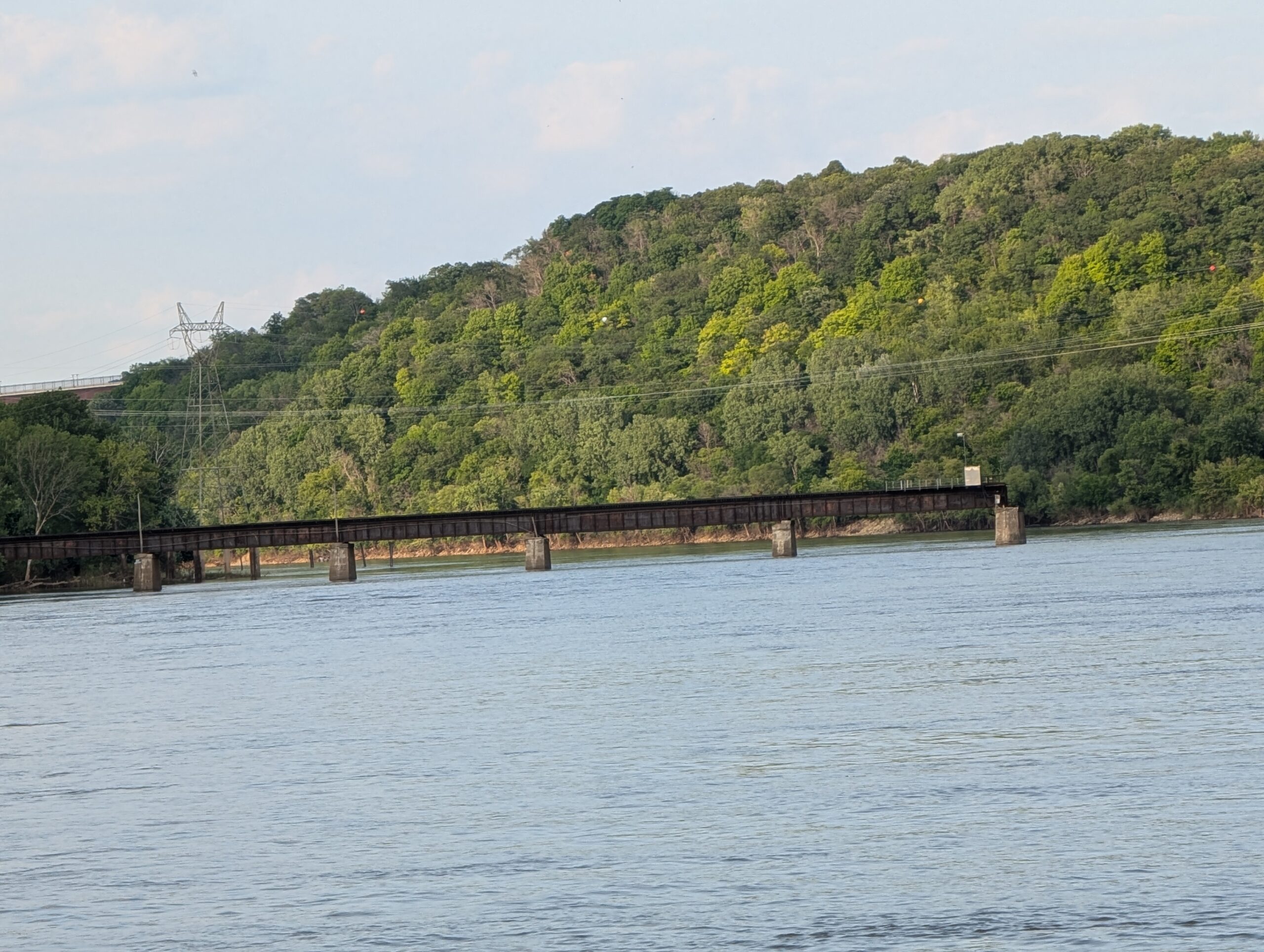
A Minnesota history cruise is not just about grand historical events; it also celebrates the everyday lives of those calling the state home. Stories of Scandinavian immigrants, African American communities, and the diverse mosaic of cultures contributing to Minnesota’s identity are integral parts of the journey. Local narrators, often with personal connections to the stories they tell, bring a human touch to the historical narrative.
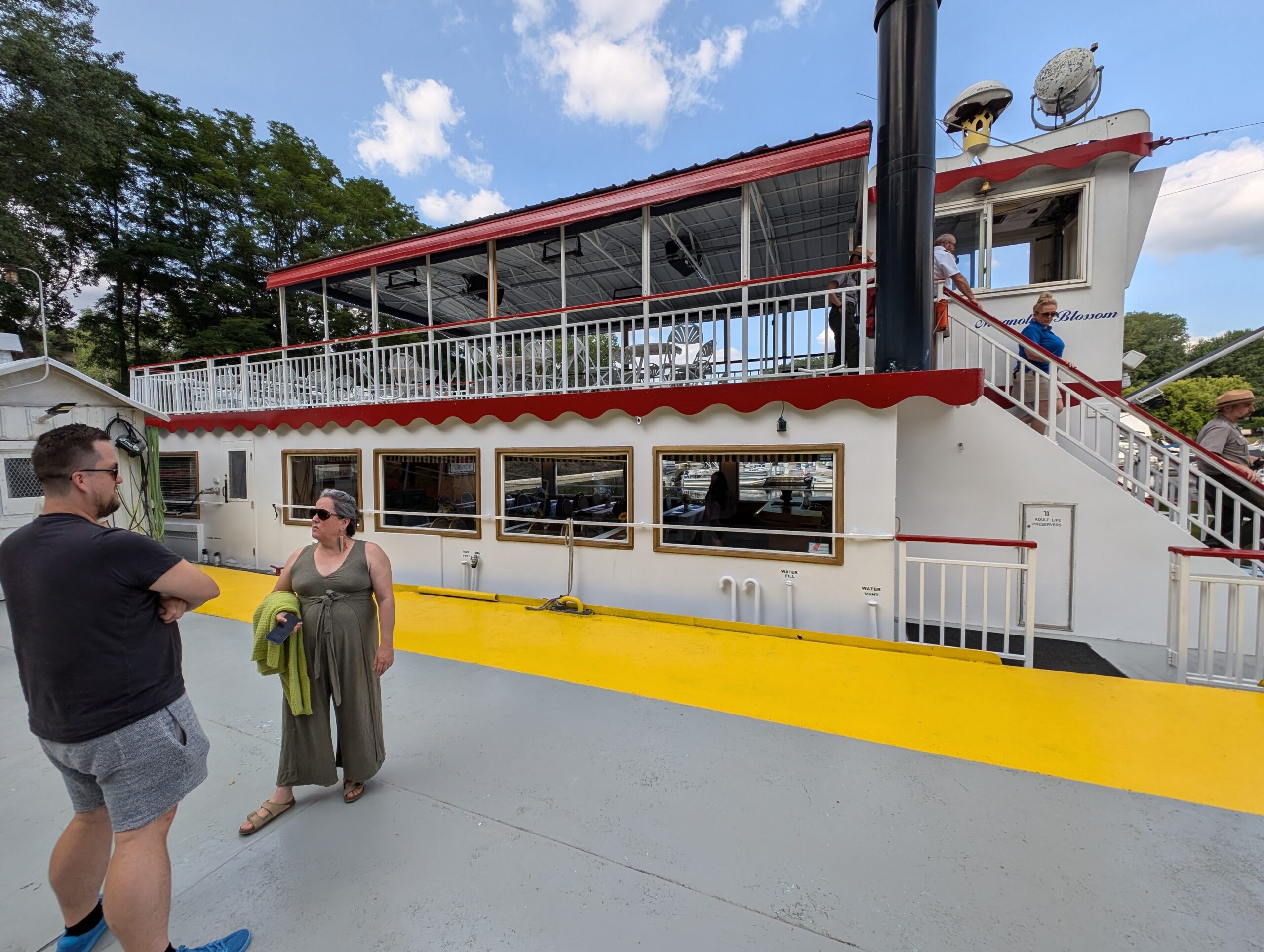
A history cruise along Minnesota’s rivers is a captivating journey through time, offering a comprehensive understanding of the state’s past. From the rich heritage of indigenous peoples and the fur trade era to the challenges of settlement, industrialization, and modern conservation efforts, each phase of Minnesota’s history is intricately tied to its waterways. As passengers disembark, they carry a deeper appreciation for the stories that have shaped Minnesota and the enduring legacy of its rivers.
Today, we’re off to Billy’s with Tom’s siblings and other family members, most certainly sharing stories of Sister Beth and her profound influence on their lives.
Be well.
Photo from ten years ago today, July 19, 2014:

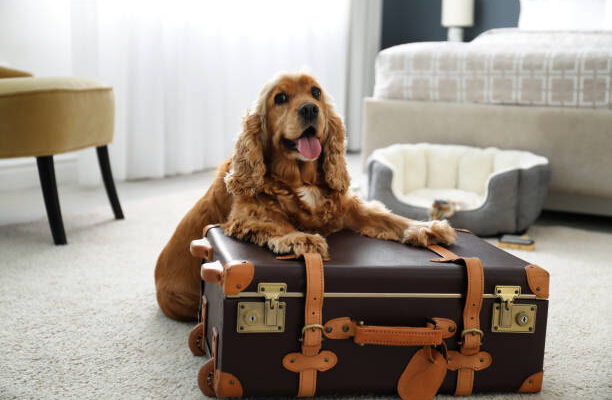
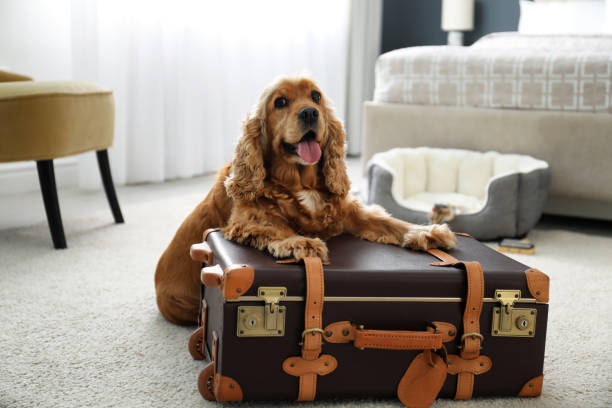
During our stay at Residence Inn by Marriott, we heard and saw several dogs of varying sizes, including guests with two dogs, usually one small and another larger. Although infrequent during the day, barking has not been an issue at night. We’ve observed pet owners cleaning up after the dogs and keeping them on a leash when outdoors. The presence of dogs has not been an issue for us longer-term guests.
In 2024, the hospitality industry saw a significant transformation, with a growing emphasis on pet-friendly accommodations. This shift is driven by an increasing number of travelers who consider their pets part of the family and wish to bring them along on their journeys. Pet-friendly hotels now offer a range of amenities and services to ensure both human and furry guests have a comfortable and enjoyable stay.
The demand for pet-friendly hotels has been steadily increasing over the past decade. This trend has accelerated as more people adopt pets, particularly during the COVID-19 pandemic, when companionship from animals became crucial for many. Hotels have recognized this growing market and are adapting their policies and facilities accordingly. In 2024, pet-friendly hotels are not just a niche but becoming mainstream.
Modern pet-friendly hotels offer a variety of amenities designed specifically for pets. These include:
While pet-friendly hotels are becoming more common, there are still essential policies and considerations to keep in mind:
Several hotel chains have become renowned for their pet-friendly policies and services in 2024:
Pet-friendly accommodations vary by region, with some areas being more pet-centric than others:
In 2024, pet-friendly hotels have evolved to cater to the growing demand from travelers who consider their pets part of the family. With a range of amenities and services designed to ensure a comfortable stay for pets and their owners, these hotels are setting new standards in hospitality. As the trend continues to grow, we can expect even more innovations and improvements in pet-friendly accommodations, making travel with pets easier and more enjoyable than ever before.
For more details on pet-friendly airline travel, please see our post from a few days ago here.
Be well.
Photo from ten years ago today, July 17, 2014:



I found this recipe online at this site but made a few modifications to make it more to our liking. The recipe called for making nine patties, but I made 18 since we preferred to prepare enough for two nights, cooking nine each night for dinner. The half-batch of batter left after making the first batch kept well, covered in a glass bowl with a lid in the refrigerator, enabling me to prepare a freshly baked batch each evening just before dinner.
Also, we had a large salad with chopped romaine lettuce, chopped celery, grape tomatoes, diced red bell peppers, and shelled edamame, tossed with homemade yogurt dressing: Greek yogurt, sweetener, Himalayan salt, a dash of organic vinegar, made-to-taste. Tom had rice on the side.
Keto Tuna Melt Patties
Two carb grams per patty, perfect for keto, low carb, or any chosen way of eating. Although these have a higher carb count than I’d usually prefer for a dinner entree, I made an exception and kept the carb count low for the remainder of my day with hard-boiled eggs and raw veggies for breakfast and Fage Greek yogurt for an after-dinner snack.
These tuna patties are so delicious that I must avoid making them too often. When Tom likes a dish, as a picky eater, I’m tempted to make it often, especially in a case like this recipe, which took no more than ten minutes to put together and another 20 minutes to bake. I try to make various dishes and rotate them to avoid losing interest in any of our favorites. This dish is now on our favorites list.
We’re staying in today, but tomorrow, we’re heading to the new Costco store in Chaska for Tom’s hearing aid appointment. While there, we’ll purchase additional grocery and toiletry items. Tom’s appointment was initially scheduled for August at the Eden Prairie store, which is only blocks from here.
But after the Chaska store opened a few weeks ago, they called and asked if he’d like an earlier appointment at the new location, and he was thrilled about it. Doing so would allow him to make any necessary adjustments before we leave Minnesota on August 25.
That’s it for today, folks. We’ll be back with Part 2, Pet-friendly travel…Hotels.
Be well.
Photo from ten years ago today, July 16, 2014:
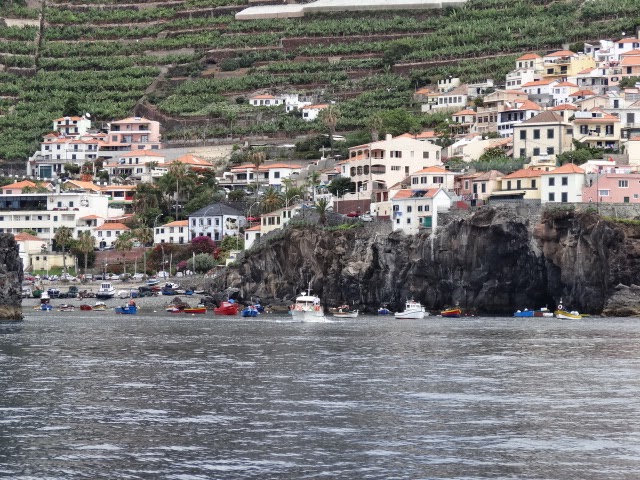
We respect user data and meet all necessary privacy law obligations.
Websites store cookies to enhance functionality and personalise your experience. You can manage your preferences, but blocking some cookies may impact site performance and services.
Essential cookies enable basic functions and are necessary for the proper function of the website.
